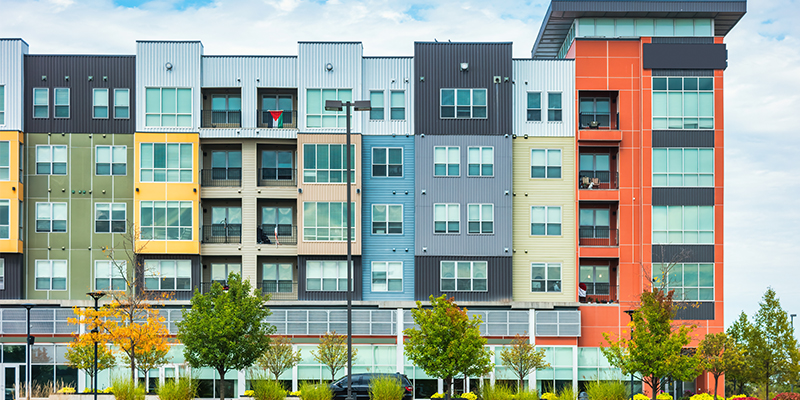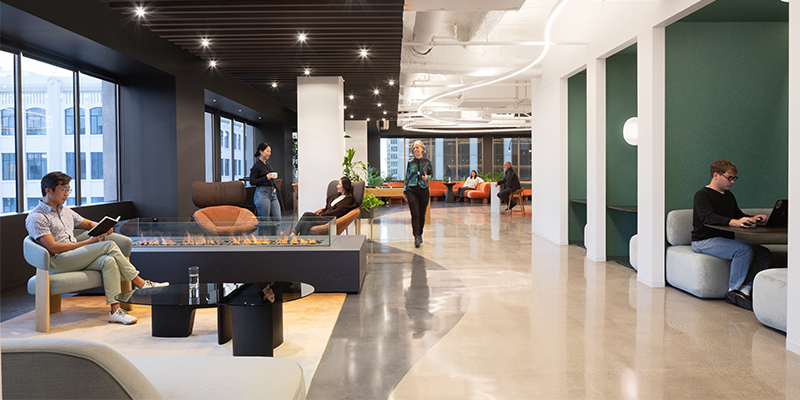Four capital markets experts joined in a round robin of Q&A in the closing session of NAIOP’s I.CON West this week in Long Beach, California. Led by Adam Pastor, managing director, Eastdil Secured, the speakers shared their thoughts on everything from transaction volume to emerging investors to pricing. Pastor was joined by Graydon Bouchillon, global head of industrial, Nuveen; John Garrigan, principal, head of acquisitions, LBA Realty|LBA Logistics ; Andrew Goodman, managing director – head of dispositions, Link Logistics Real Estate; Bret Hardy, executive managing director, Newmark;
Q. 2019 was a record-setting year for transaction volume, and despite the challenges in 2020 we hit $75 billion in volume. What’s next?
Goodman: There is no sign of slowing down, and it’s all centered around tenant demand. People have been focused on the growth driven by COVID-19, but the last five years have had strong tailwinds. Office was weak before the pandemic, and retail and industrial have literally flipped cap rate averages from 2015 to 2020. This kind of secular shift means higher capital deployed in industrial.
Q. Who are the biggest competitors in investment today?
Bouchillon: There has been a lot of chatter coming out of the [COVID-19] pandemic, and we’re seeing buyer profiles changing. Investors who were normally in office are increasingly attracted to industrial, and the big players have only gotten bigger. The new entrants to the markets are more involved on the development side than the acquisition side, and we’re seeing very diversified funds that are tiring of office and retail and are underweight in industrial.
Hardy: A lot of household names, like Blackstone, are raising capital for industrial, but it’s not limited to these groups. We’re seeing foreign capital in a larger number of trades. This is absolutely happening on industrial asset sales, particularly for good locations.
Garrigan: The demand is insatiable, and it’s all due to exploding fundamentals. Industrial landlords have been disciplined to not overdeliver, and there’s tight supply and demand. We are absolutely looking for more opportunities as we fundraise.
Q. How important is leverage today?
Garrigan: One of the big factors is rental rate growth, but debt financing is important. Talking about leveraged internal rate of return (IRR), cap rates have become what they have because debt is so expensive. If interest rates go up, so will cap rates. If you’d asked me 24 months ago if interest rates would be higher, I would have said yes. With such a robust economy, it’s amazing that we’ve left interest rates where they are.
Bouchillon: Interest rate hikes in 2018 and 2015 caused some wobble for a day.
Q. In terms of capital flowing in, how has that affected pricing from the brokerage side?
Hardy: We need to define gateway and secondary markets. Previously, gateway markets were the ones with the best proximity to ports, like Seattle, the East Bay in San Francisco, and the five counties comprising Los Angeles. Everything else felt secondary or tertiary. Now we’ve seen a shift. Ports are still important, but just as important are rooftops. This has taken markets such as Reno, Las Vegas, Portland and Phoenix and elevated them to a tier 1.1 market.
Garrigan: Think about infill urban markets like Brooklyn. The cap rates aren’t considerably different, but the rents are enormous.
Q. In the last 18 months, e-commerce growth has exploded. What are you seeing?
Bouchillon: I’ve signed 96 leases this year, and the top users have been plastics (manufacturing), food users and e-commerce. Medical has fallen off since 2020.
Q. What headwinds are in store for the industry?
Bouchillon: The tailwinds far exceed the headwinds, and all of our customers are expanding the inventories.
Goodman: It’s fundamental real estate – supply vs. demand. There could be something that alters the demand, and that will be problematic. It’s hard to imagine what that could be, maybe a macroevent or federal regulations. Rent growth is such a small part of an operating budget – only around 5%. The bigger impacts to the bottom line are transportation and labor.
Q. How important is ESG for investment decisions?
Bouchillon: Two years ago, I thought ESG (Environmental, Social and Governance) was more in vogue in Europe. Now I know it’s the real deal, and U.S. institutions and state pension plans are taking this very seriously. It’s going to cost more to build buildings, and people are going to have to establish a plan for their funds because tenants are now focused on this too. There is a subset of 10 sophisticated users who won’t look at your space without understanding your ESG commitment.
This post is brought to you by JLL, the social media and conference blog sponsor of NAIOP’s I.CON West 2021. Learn more about JLL at www.us.jll.com or www.jll.ca.









